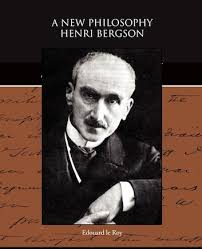Chapter V — The Problem of Consciousness. Duration and Liberty
byChapter V invites readers into Henri Bergson’s original vision of inner experience, a philosophy that reshapes how we understand thought, time, and freedom. He departs from the prevailing view of consciousness as a collection of separate parts. Instead, he argues that mental life flows like a melody, where each note influences the one before and after. Bergson sees consciousness as layered and continuous, not mechanical or static. This movement, which he calls “duration,” cannot be sliced into identical moments or mapped using clocks and numbers. In duration, time is felt, not counted. It unfolds inwardly, shaping personality and giving each person a rhythm of their own.
Traditional psychology, especially associationism, treats the mind as a machine—reactive, predictable, and passive. Thinkers like Taine and Mill focused on external stimuli and patterns of response. But Bergson believes this method flattens mental life into mere imitation of matter. Consciousness, in contrast, holds depth and creativity. It is not governed by chains of cause and effect, but by an internal logic that allows freedom to emerge. This freedom is not chaotic impulse—it is the natural result of how moments build upon one another in duration. What we call “choice” is shaped by the entire stream of lived experience leading to a single moment. In this view, freedom becomes a product of maturity and inner coherence.
For Bergson, liberty is inseparable from real consciousness. He does not imagine freedom as random or undetermined. Instead, he sees it as the fullest expression of one’s self over time. True acts of will are not isolated decisions, but outcomes of an ongoing process where thoughts and feelings blend gradually. Each decision, though seemingly sudden, is backed by a long duration of preparation. This is where liberty takes root—not in breaking rules, but in creating actions that reflect the full truth of who we are. Bergson’s theory challenges both determinism and a shallow view of free will. It recognizes that personal freedom is real but must be understood within the context of a continuous self.
The chapter also takes on the relationship between the mind and the body, a classic philosophical puzzle. Bergson rejects the notion that brain activity perfectly mirrors mental states. The brain, he argues, serves more as a filter than a mirror. It selects from our full store of memories, using what is helpful for action and leaving the rest dormant. This perspective revolutionizes how memory is understood—not just as retrieval, but as an active process of simplification. He distinguishes between two types: pure memory, which preserves the past in its entirety, and motor memory, which uses the past for practical movement and decisions. This dual system allows us to remain rooted in history while responding in the present.
Memory and consciousness, then, are inseparable from freedom. Each moment in our lives contributes to a deeper reservoir of experience. That reservoir gives our actions depth and continuity. Rather than being prisoners of our past, we are shaped by it in ways that allow creative expression. The body, through its actions, channels and simplifies this vast interior landscape. Far from being mechanical, it is part of an intelligent system of engagement with the world. This idea challenges both rigid materialism and overly spiritual accounts of consciousness. It suggests that human life sits at the meeting point of matter and memory, where liberty emerges not in defiance of nature but as its highest expression.
Bergson’s view insists that true understanding of the mind can’t come from outside observation alone. Introspection is necessary—not as a vague reflection, but as a disciplined recognition of duration within ourselves. Through this inward gaze, we notice that our experiences are not uniform blocks but unique folds in the fabric of time. Our choices reflect this internal shaping. What may seem like a spontaneous decision often carries the quiet momentum of many days, thoughts, and feelings behind it. Here, freedom becomes a lived truth, not an abstract idea. It grows quietly, organically, through the pattern of lived duration.
In this way, Bergson gives readers a fresh way of thinking about consciousness—not as something built from static parts, but as an ever-moving current. Time, in his philosophy, is not a container but a force. It does not simply measure experience; it is experience. With this insight, everything from perception to personality becomes part of a living whole. Thought, memory, freedom, and the body come together not as separate functions, but as expressions of a life deeply immersed in change. Through Bergson’s eyes, the human mind is not a machine, but a melody—growing, evolving, and endlessly creative.

